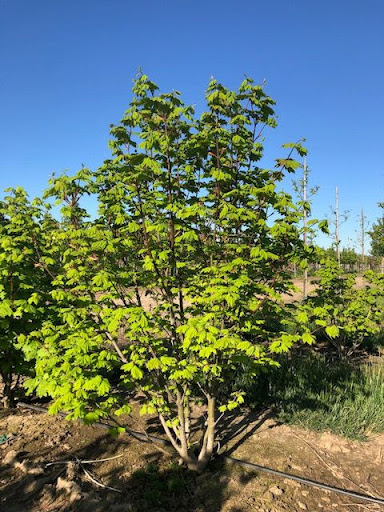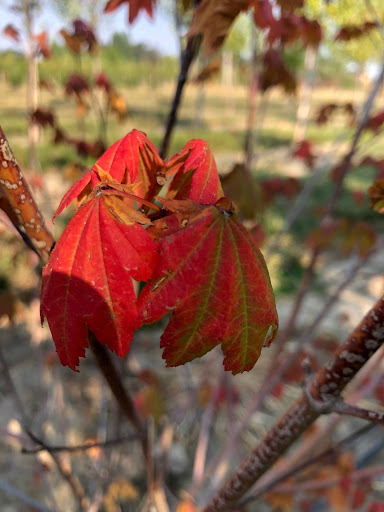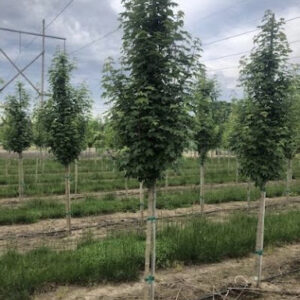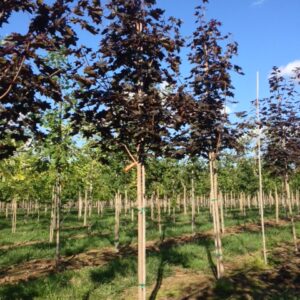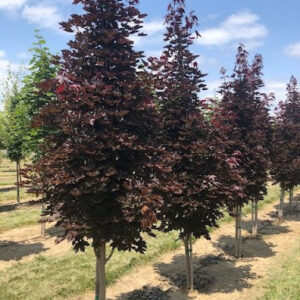Botanical Name: Acer circinatum
Alternate Name: Pacific Northwest Native Maple
The Vine Maple (Acer circinatum) is native to western North America. It is found growing in the coastal forest understories beneath much larger trees, such as Douglas firs and Big Leaf Maples, from northern California to southwest British Columbia.
This tree can be found in clearings and grows at altitudes from sea level to 4,900 feet. It is often found along rivers, growing close to the water or beneath conifers, lighting up the dappled shade with its beautiful yellow foliage in the fall.
The Vine Maple’s usual form is a multi-trunked, large shrub or tree. It grows from around 16 to 26 feet tall but occasionally will grow into a small or medium-sized tree, reaching 50 feet. The shoots are slender and hairless.
The Vine Maple, although not really a vine, is so-called because it has very slender, often sprawling, branches. The branching habit produces an elegant, tiered effect. These branches often root to produce new trees, creating dense thickets underneath the shade of taller conifers. Its botanical name ‘Circinatum’ refers to the rounded, although regularly lobed, maple leaves.
Vine Maple trees are flexible, and their growth can bend back towards the ground. Sometimes the branches will root and develop a new root system. This characteristic makes it the only maple capable of layering (producing a new plant while still attached to the ‘mother’ plant).
Flowers of deep red and white grow along branches in the spring, contrasting with the red sheaths covering the leaf buds, and providing a colorful show in the garden. The new reddish woody growth also brings interest in spring, and it is followed by soft green leaves. The Vine Maple’s fall color can vary widely from light yellow in the shade to bright orange or red when grown in sunnier locations.

